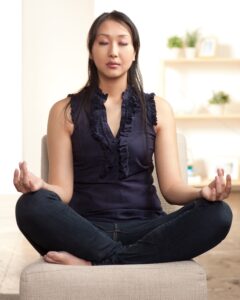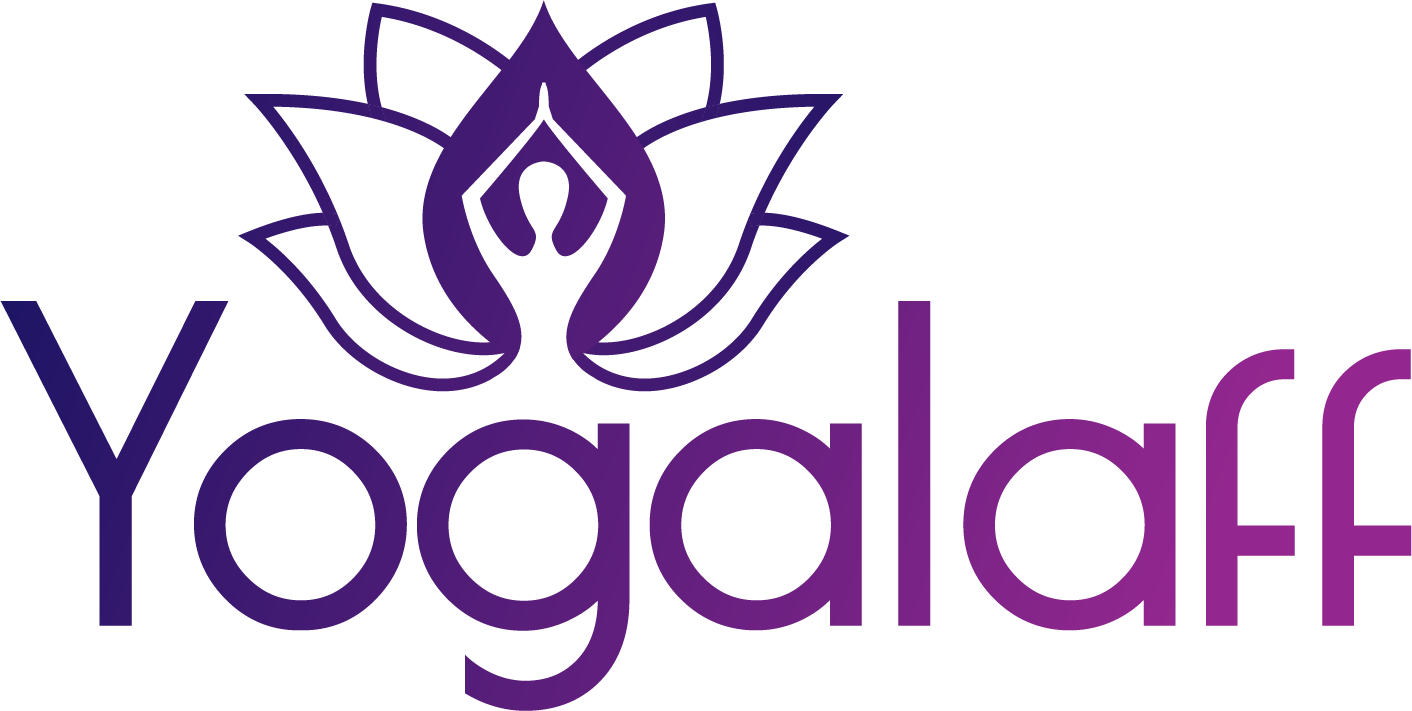When you’re meditating, you should aim to have a stable, straight posture and to be as comfortable as possible.
Finding a good meditation bench, chair, or cushion will help a lot, especially if you have bad knees.
The type of chair, bench, or cushion that you should use will partly be a matter of preference and partly related to your body type.
There are many different products on the market. You can use a simple cushion or stool, or purchase something that is specifically designed for meditation.
There are mats, zabutons, zafus, pillows, and meditation benches that can help you to stay comfortable.
If you’re lucky enough to have access to a brick and mortar store, then you should go and test a few different ones to try to get something that is as comfortable as possible.
If you do not have access to a brick and mortar store, then this guide will help you to decide what to buy.
The Best Meditation Benches for Bad Knees
- IKUKO by Bluecony Original Ergonomic Meditation Bench
- Mudra Crafts Portable Wood Seiza Padded Bench
- Maple Hardwood Personal Bedtime Prayer Kneeling Bench
Can You Do Yoga with Bad Knees?
Yes, there are several modified yoga poses for people with bad knees.
Although, if your knees crackle, creak, or pop when you’re going up or down stairs, lunging, bending down or doing yoga, you should visit a medical professional for an assessment.
Keep in mind that your knees are joints and it’s impossible to strengthen them like you would strengthen a muscle, but it’s possible to improve the flexibility of your joints.
Note that you can try out the following yoga poses to strengthen your knees and bring more flexibility to these joints:
- Chair Pose (Utkatasana Yoga Pose)
- Bridge Pose (Setu Bandasana Yoga Pose)
- Half Moon Pose (Ardha Chandrasana Yoga Pose)
- Mountain pose (Tadasana Yoga Pose)
- Triangle pose (Trikonasana Yoga Pose)
Can Yoga Help Arthritic Knees?
A few studies have identified that people with different types of arthritis often get relief from a few yoga poses.
Yoga can also improve flexibility in the joints as well as reduce tension and stress, leading to better sleep. Therefore, people with arthritis can benefit from yoga in many ways.
How to Stop Your Knees from Hurting After Yoga?
A simple trick is to remember the acronym RICE. It means, rest, ice, compress and elevate. RICE is a good technique for relieving knee pain often caused by arthritis flare-ups or a minor injury.
Rest your knees, then apply some ice to reduce the swelling and wear a compression bandage while keeping your knees elevated for the best results.
Understanding Your Meditation Posture
 The meditation seat that you choose will depend on the posture that you use when you meditate.
The meditation seat that you choose will depend on the posture that you use when you meditate.
There are a few different posture options, but a good meditation posture requires:
- Stability: You need to be able to sit and relax so that your brain feels safe and you can meditate without distraction or worry about falling.
- Straight: If you are sitting up straight and comfortable, then you will be more focused and better able to stay present.
- Comfortable: If you can sit for long periods without feeling the need to move, then you will not get knocked out of your meditative state through pain or “pins and needles” (numbness).
The most popular meditation positions are the full lotus, half lotus, on a stool, on a chair, or Burmese.
The most popular posture used in the United States is the simple, cross-legged Burmese style. Some like to use Seiza, though, which is a Japanese style that involves kneeling on a meditation cushion or stool.
The full lotus and half lotus styles are traditional, but they require a level of flexibility and can be uncomfortable if you are not flexible enough to do them well.
If you find that the lotus position is too demanding, then consider the Vajrasana, Swastikasana, Siddha Yoni Asana, Sukhasana, or Siddhasana postures.
There is a book published by Swami Satyananda which explains how to perform the different asanas.
The leg position is just an additional detail. Regardless of the position that you choose, there are a few details that you should always pay attention to:
- Your head should be stretched towards the ceiling. Gently pull your chin back to accomplish this.
- You should keep your mouth closed, and allow your tongue to touch the palate.
- Keep your spine neutral, with your pelvis positioned in a way that prevents a spinal arch.
- Allow your shoulders to relax so that you can breathe naturally.
To have a good pelvic position, you will need to have yourself positioned at the correct height. Your hips should be above the level of your knees.
This will allow the pelvis to roll forward, allowing the back to straighten naturally, without any pushing or undue stress. The right meditation seat can help with that kind of posture.
Using Meditation Cushions, Stools, & Chairs
Try to find a posture that you like. Here’s a quick overview of the various posture, from hardest to easiest.
The Yoga Posture
If you like to sit on the floor, either in half-lotus, easy pose, or siddhasana, then you don’t need anything sophisticated.
A thin cushion is more than enough. Actually, a cushion that is too high could make you bend forward too much.
The Burmese / Balinese Posture
This posture is best with a Zafu, Gomden or Bolster. You can also turn a yoga block edge-on and use that instead.
Zafus come in a few different styles:
- Classic: The classic zafu is the type of zafu that you often see in Zen temples all around the world.
- Wedge/Crescent: The wedge or crescent zafu is wider, to support your hips and legs.
- Wheel: The wheel zafu is firmer, so it’s a good choice for people who need a high, tight seat.
- The height and the stiffness matter more than the shape.
Kneeling / Seiza
If you like to sit in Seiza, then you can either use a stool or turn a zafu onto its side and sit straddling it.
The latter is a good option if you are not particularly flexible, because it helps to raise the hips high, and is, therefore, better for those with bad knees.
Some people find that an uncushioned bench or stool is uncomfortable, and it won’t do any harm to put a thin cushion on it.
Meditation Chair
If you find that these positions don’t feel very comfortable for you, then a chair could be a good option for a longer meditation period. A thin cushion will help to support the lower back while you’re in the chair.
How Firm and How High?
It may seem like a small detail, but the height and the filling of the cushion can make a big difference.
If you feel like your cushion isn’t comfortable enough, it’s probably that it’s the wrong height. A cushion could be too tall, or too short.
Try to pick a few different cushion heights. Even a change of one inch could make the difference between a nice meditation session and sore legs, knees, and back. The filling will make a difference too.
As nice as soft, bouncy fillings feel to your hands, you may actually want something that is a bit firmer when it comes to meditating.
Buckwheat Hulls
Buckwheat is the most popular filling in modern meditation. Buckwheat hulls feel a lot like sand, and will shift and give to conform to the shape of your body. Buckwheat is very firm, but it has enough softness (i.e., give) to be comfortable.
The outer hull of buckwheat is too hard to be eaten, so when buckwheat is shelled, there is a lot of the hull left over as a waste product.
If you want a soft cushion and something that is sturdy, durable and hardwearing, then this is a good choice.
Some suppliers do make buckwheat cushions that are more sturdy, and taller than kapok cushions, but in general, they tend to be thinner and less durable.
Kapok Fiber
Cushions that are made using kapok are firmer than ones that contain buckwheat hulls. Kapok is soft, hypoallergenic, mold and mildew resistant.
It is a natural fiber made from the seedpod of the kapok tree, and it is found in rainforests all over the world.
This silky and resilient fiber has been the traditional stuffing for meditation cushions for several centuries.
Kapok fiber will compress over time, however, so you may find that after a while you want to fill it up a bit more. Those who sit for long periods, and those who need higher support, will like kapok over other alternatives.
Wool
Wool is a lightweight, durable material that does not compress. Wool cushions tend to be comfortable and they also allow more blood flow compared to cushions made from other fillings.
Many yogis consider wool to be a good insulator of prana and therefore recommend the filling. Wool’s main downside is that it is not as firm as kapok.
There are other materials which can be used for fillings, including:
- Beans
- Cotton (cheap, but not good for the environment)
- Polyester/polypill (also very cheap)
- Air (inflatable)
Other Meditation Props
If you expect to spend a lot of time sitting on the floor, then a Zabuton will make your long meditation sessions more comfortable and productive.
These are square mats from Japan that are used under a stool or cushion, to help with your hip positioning so that you feel comfortable. A folded blanket would offer similar benefits.
Consider using small cushions to support your hands and knees as well, depending on your body type. If your knees are too high when crossed, a taller cushion or some knee supports could be helpful.
A low stool or cushion will feel uncomfortable and leave you with knees floating in the air.
If you find that even with a raised cushion, your knees are not supported properly, add knee supports as well. Meditating without support for the knees could leave you with painful hips.
In general, if you have knee injuries or poor hip flexibility, then you will want to use a cushion while you are meditating; the same also applies to people who tend to experience pins and needles in their legs.
Those with a long trunk compared to the length of their arms may benefit from using a set of hand cushions.
Supporting the hands helps stop the shoulders rolling forward too far, and will also help to prevent your back from becoming arched.
Now, you’re ready to go. What’s your favorite set up for when you are meditating if you have bad knees?

